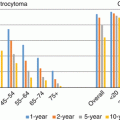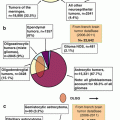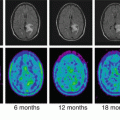Fig. 18.1
Schematic model of (a) spoken word production and (b) spoken word comprehension
18.1.1.2 Memory
Thanks to numerous works in cognitive neuropsychology for over 30 years, consensual views and models of memory functioning have emerged. It is believed that memory is not a unitary system, but that it is composed of multiple independent systems nonetheless working in a relative interactive manner. A classical and well-accepted distinction is the one made between short-term/working memory and long-term memory. The former is involved in the temporary maintenance of information and its mental manipulation [10]. Numerous activities of daily life are constrained by the proper functioning of this memory. This can range from basic activities such as keeping in mind a telephone number to more complex cognitive tasks such as comprehension during reading, mental calculation, problem solving. Long-term memory is divided in two non-completely segregated subsystems [11]. It includes semantic and episodic memories. The former is highly involved in accessing the meaning of words, objects, people and facts but also in the apprehension of the whole world. The latter has an essential role in encoding and storing new information in a spatial and temporal given context. It is the basis on which our autobiographic memory (personal facts) is built.
18.1.1.3 Attention
Attentional system is rooted in a long tradition in neuropsychology. It has been the subject of extensive experimental investigations during the last century. However, the term ‘attention’ remains difficult to define because it involves several phenomena. Numerous cognitive or anatomo-functional models have been proposed in the past. The more consensual in clinical neuropsychology is perhaps the model by Van Zomeren & Brouwer [12]. According to these authors, the attention system is characterized by two axes, which are themselves partitioned into two subcomponents. The first axe corresponds to attention intensity. It covers the notion of attentional arousal, vigilance and sustained attention. The second, the selectivity axe, includes the functions of selective attention (the capacity to select and orientate its attention on relevant information and to maintain it) and divided attention (the capacity to allocate attention on several sources of information). All the processes would be under the control of a more globalizing entity, namely the supervision attentional system, particularly involved during goal-directed behaviors (i.e. executive functioning).
Attention functions are crucial because they are the prerequisite to the functioning of all other cognitive functions.
18.1.1.4 Executive Functions
Executive functions are defined as the set of processes which allows cognitive and behavior control. They are particularly involved when the subject has to adapt himself to a new or complex situation (carrying out no procedural tasks; problem solving). Even though the term “executive functions” usually refers to a unitary concept, it includes a large number of sub-processes. Among these, the most prominent processes are action initiation, planning, organization, cognitive flexibility, cognitive control, emotion control or conflict monitoring. It is believed that their coordination makes possible the success of self-generated action or behavior [13], and efficiency in dealing with the environment intentionally. In the case of severe executive functioning disturbances [14], patients behave as if they were completely subject to environment (e.g. imitation behavior, lack of control and desinhibition, stereotypic actions, or perseverations).
18.1.1.5 Social Cognition
Social cognition encompasses all psychological processes involved in the comprehension and the regulation of social behaviors. It includes a number of skills in which Theory of Mind (ToM) and empathy are the most representative. The former is referred to a unique form of metacognitive ability, which makes it possible to attribute mental states to oneself or others, like intentions, emotions, motives or beliefs [15]. ToM allows establishing causal links between behaviors and the hypothetical psychological reasons which have induced them [16]. For this reason, such a brain function is thought as one of the pedestal on which social cognition is supported, authorizing successful social relations and behaviors. As for empathy, it can be defined briefly as the ability to recognize and share an emotional experience [17–19].
These two social cognitive functions are very important for the appropriateness of behavior. For example, ToM disturbances are the cognitive landmark of a variety of neuropsychiatric or neurodevelopmental condition like schizophrenia or autism spectrum disorders [20]. A severe lack of empathy characterizes psychopathy or antisocial personality disorders [21].
18.2 Effects of Therapeutic Strategies on Cognitive Functioning
As mentioned above, surgery, chemotherapy, and/or radiotherapy constitute the main therapeutic options that may be proposed to DLGG patients, often completed by antiepileptic drugs. The effects of these different treatments on cognitive functions have been reported in several studies.
Concerning surgery, provided that tumor removal is performed in awaken conditions, allowing intraoperative brain mapping and maximal resection according to functional boundaries (see Chapters on Surgery for DLGG by Duffau), a transient worsening in cognitive processing is often observed. Most of these cognitive deficits (see below) resolved within 3 months [22], thanks to brain plasticity [23] which is presumably potentiated by the surgical act itself and by individualized cognitive rehabilitation.
Regarding radiotherapy, several studies showed that DLGG patients who received local radiotherapy experienced late-delayed (mean of 12 years after diagnosis) treatment-related disorders in cognitive functioning, especially in attentional functioning. Of note, these disorders were regularly associated with radiological abnormalities, compared with patients who were radiotherapy naïve [24, 25]. Moreover, a phase III trial showed that early radiotherapy has no impact on overall survival in DLGG patients [26]. Therefore, authors suggest that deferring radiotherapy treatment might be the most beneficial strategy to cognitive status.
Concerning chemotherapy, some authors have recently suggested that it might be a valuable therapeutic alternative in the management of patients with DLGG considered as inoperable (or not re-operable) because of an extensive involvement of eloquent areas, or because of invasion of contra-lateral hemisphere [27]. Interestingly, patients who benefited from this therapeutic strategy, namely neo-adjuvant chemotherapy followed by surgical resection after tumor shrinkage, presented with only slight cognitive disturbances, mostly related to glioma location [28].
18.3 Surgical Management of DLGG Patients
In any case, without treatment, malignant degeneration is invariably observed in DLGG. According to the guidelines of the European Association of NeuroOncology, surgical resection is now considered as the first therapeutic option for DLGG patients [29]. The extent of resection has been demonstrated to have a significant impact on the natural history of the disease, by delaying malignant transformation and increasing overall survival [30, 31]. Given that this lesion is preferentially located in brain areas involved in sensory-motor and language functions [32], this surgical management has to be led in awaken conditions, in order to check online patients’ cognitive functioning (for which a significant inter-individual variability has extensively been reported) [33, 34]. This therapeutic (and not “wait and see”) attitude allows achieving a challenge with two antagonist goals: to maximize the extent of resection while preserving functional areas, in order to increase patients’ survival without inducing a worsening of their QoL—or even by improving it [35].
Therefore, the surgical management of DLGG patients has to be highly controlled and to follow a sequential succession of therapeutic stages well defined, that begins at the moment of the diagnosis and never ends (see Fig. 18.2). This dynamic strategy encompasses the involvement of a pluri-disciplinary team, which in the peri-operative period, is constituted by the neurosurgeon, anesthesiologist, speech-therapist and/or neuropsychologist, and nurses.
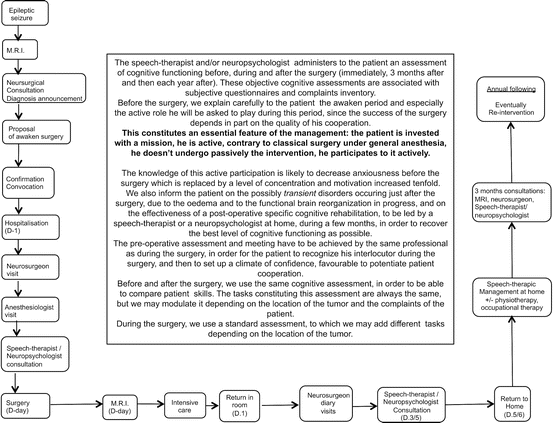

Fig. 18.2
Longitudinal management of DLGG patients undergoing a surgical resection in awaken conditions
The speech-therapist and/or neuropsychologist have an important role to play in this management. They have to assess cognitive functioning of patients at different peri-operative times, in order to highlight their cognitive status and the efficiency of their own brain plasticity. To achieve this assessment, not only several objective tests but also subjective questionnaires and complaints inventory may be used. Moreover, the speech-therapist and/or neuropsychologist, who will be near the patient during surgery, have to explain clearly the modalities of the surgical procedure as well as the active role the patient, crucial to allow the neurosurgeon to achieve a successful resection. Indeed, the patient should be concentrated and motivated during all the awake period, to enable the neurosurgeon to establish relevant anatomo-functional correlations. This latter aspect of the management is as important as the assessment of cognitive functioning.
18.4 Choice of Cognitive Tests
It is obvious that the choice of cognitive tests depends on the goal of the assessment, that is, patient care (including peri-operative evaluations) versus patient longitudinal follow-up. Cognitive functioning assessment in the context of patient care must take into account several constraints: temporal constraints, on the one hand, especially concerning intra-operative assessments, and physical and psychological associated signs, on the other hand, due to the tumor itself, but also to reactive psychological distress and treatments—especially antiepileptic drugs (AED). Fatigue is the most reported physical associated sign, and it is correlated with reduced concentration, motivation and activity. There seems to be no relation between fatigue and tumor laterality, or between fatigue and type of neurosurgical intervention (biopsy versus resection). On the other hand, fatigue is associated with AED use [36]. Psychological distress and mood disturbances associated with the disease may also lead to attention disorders and decreased motivation, and thus affect cognitive functioning [37]. In the context of patient care, we should get the most sensitive information as possible about cognitive functioning, independently of disorders induced by physical and psychological associated signs. For instance, in the context of pre-operative examination, we have to assess present (i.e. the day just before the surgery) patient cognitive functioning in order to understand his own brain functional organization and the efficiency of brain plasticity, to give in a way certain clues concerning the possible extent of resection. This pre-operative assessment must be performed in a given time, keeping in mind the understandable psychological consequences induced by the prospect of the imminent brain surgery. Now, extensive cognitive assessments are time-consuming and may fatigue the patient entailing biased results. Thus, cognitive assessments in the context of patient care should be in the same time individualized, sensitive, relevant, but not too long (ideally, each assessment should not exceed 1 h).
Cognitive functioning assessment in the context of longitudinal follow-up should be more extensive, because we are facing neither temporal constraints nor acute psychological distress. In this setting, the use of comprehensive series of tests, possibly administered during several sessions to avoid fatigue, is relevant and of great interest for many reasons: to understand accurately patients cognitive functioning, to put the bases of a possible cognitive rehabilitation, and to control its effects periodically. Of course, the tests used in this context have to be sensitive, valid and reliable. Moreover, longitudinal cognitive assessments should be administered with a sufficient delay between each other (at least 6 months), in order to avoid practice effects.
18.5 Cognitive Evaluation in the Context of Patient Care: Perioperative Assessment
The surgical management of a DLGG patient is highly controlled and it always follows the same temporal organization (see Fig. 18.2). Cognitive evaluations are administered 4 times peri-operatively: the day before surgery, during surgery, 3–5 days after surgery and 3 months after surgery. Then, cognitive functioning is assessed periodically.
18.5.1 Preoperative and Immediate Postoperative Assessments
The same assessments (except subjective questionnaire and complaints inventory which concerns only the pre-operative assessment) are administered to the patient the day before the surgery and 3–5 days after. These assessments have to be very sensitive in order to understand one’s individual cognitive functioning, the effects of the tumor on neurocognition, the efficiency of functional brain plasticity (pre-operative time), the immediate effects of the surgery and surrounding edema on cognitive processing (post-operative time), with the goal to establish an individualized program of cognitive rehabilitation (see the Chapter by Herbet and Moritz-Gasser).
Preoperative meeting allows explaining to the patient the surgical procedure and the importance of his active participation, answering to his questions and ensuring him that his present cognitive functioning will be at least preserved, or even improved after surgery. Nevertheless, the patient and close parents must be informed that transient disorders (sometimes impressive) are frequently observed immediately after surgery, due to the resection, surrounding oedema and brain reorganization in progress. We must explain to the patient the transient character of most of these disorders, which will resolve in a few weeks. Moreover, the patient must be informed that he/she will benefit from a specific cognitive rehabilitation performed at home by a speech-therapist and/or neuropsychologist during at least 3 months, in order to potentiate this spontaneous brain reorganization, and then to maximize the recovering of the best level of QoL.
18.5.1.1 Subjective Questionnaire and Complaints Inventory
Most of the time, before surgery, DLGG patients don’t report cognitive symptoms, or only mild ones, which don’t interfere with their daily life. Nevertheless, an extensive and specific cognitive evaluation highlights frequently slight cognitive deficits, especially concerning working memory and speed of processing [38, 39].
Indeed, if brain plasticity allows an efficient reorganization, thanks to the slow-growing character of DLGG, such a brain functioning implies consequently a new functional network entailing presumably a higher cognitive cost in information processing. Moreover, there are frequent discrepancies between objective disorders revealed by cognitive tasks and subjective disorders experienced by patients in their daily life. That’s the reason why it is very important to ask the patient, before any objective assessment, about his complaints. Questions are very simple:
Do you have complaints concerning your cognitive functioning?
Are you full-working?
If no, what are the reasons of decreasing your time of work?
Is it difficult to mobilize your attention?
Did you note any difficulties in elaborating projects, understanding orders, being concentrated on a task, participating in a conversation?
Do you feel an important fatigue during or after such cognitive tasks?
It may be useful to ask the same questions to the close relations in order to compare subjective complaints and observed disorders.
18.5.1.2 Language Evaluation
We use always the same battery of tests to assess language processing before and immediately after surgery, whatever the location of the DLGG (Table 18.1). This gold-standard assessment begins with the Edinburgh inventory [40] in order to specify patient handedness, and is then constituted by:
An evaluation of the level of fluency and informativity of spontaneous speech,
A timed naming task (DO 80), which consists in naming 80 black and white pictures [41]
A fluency task (semantic and phonological), which consists in producing the highest number of words belonging to a given semantic category or beginning by a given letter, during 2 min [42]
A timed non-verbal semantic association task (PPTT), which consists in matching two semantically related pictures [43].
Table 18.1
Overview of (A) language assessments (B) other cognitive assessments
Patient care (peri-operative assessments) | Patient longitudinal follow-up |
|---|---|
Part A | |
Pre- and post-operative standard assessment | |
Subjective questionnaire/complaints inventory | Subjective questionnaire/complaints inventory |
Handedness | Handedness |
Fluency/informativity | Fluency/informativity |
Timed naming task | Timed naming task |
Fluency task | Fluency task |
Reading task | Reading task |
Additional tasks depending on tumor location | BDAE |
Metaphoric language | Repetition |
Repetition | Lexicality judgment |
Reading, writing | Reading/writing |
Intra-operative assessment | Token test |
Semantic association task | Metaphoric, implicit language, prosody |
Naming | Communication |
Counting | Quality of life |
Reading | |
Repetition | |
Dual task | |
Part B | |
Pre- and post-operative standard assessment | Intellectual functioning |
Subjective questionnaire/complaints inventory | Verbal Comprehension, perceptive organization, working memory, processing speed (WAIS 4) |
Speed of information processing | |
Working memory | Verbal and non verbal Memory |
Executive functioning (flexibility, inhibition) | Short-term and working memory (digit span test) |
Motor and reflexive praxis | Episodic memory (RL/RI 16) |
Additional tasks depending on tumor location | Praxis |
Visuo-spatial cognition | Motor, ideomotor, reflexive, constructive |
Social cognition, emotion recognition | Visual gnosis |
Additional tasks depending on tumor location | V.O.S.P. |
Voluntary movement | Somatognosis |
Visuo-spatial cognition | Naming body parts |
Visual fields | Visuo-spatial cognition |
Dual-task | Line bisection, bell test |
Social cognition | Attention |
Sustained attention, divided attention (T.E.A.) | |
Executive functions | |
Motor and verbal inhibition (Go-no-go and Stroop tests), shifting (T.M.T.), visuo-spatial planning (Rey’s Figure), dual tasks (personal material) | |
Social cognition | |
Theory of Mind, social and moral reasoning, empathy | |
Emotion | |
Facial Emotion Recognition (Ekman’s facial emotion recognition task) | |
It is worth noting that this assessment doesn’t encompass a whole evaluation of language (e.g. BDAE [44, 45]. Indeed, we made the choice not to include this kind of whole examination, because we never observed, after more than 400 DLGG patients in the left hemisphere, lasting aphasic disturbances demonstrated by such a test. In other words, whole language evaluation such as BDAE, for relevant they are concerning other etiologies, are not sensitive enough for slight language disorders in DLGG patients, especially in the immediate pre-operative period.
Finally, we added a non-verbal semantic association task, because we estimated that the sole naming task didn’t bring enough information on semantic processing.
Our assessment presents several advantages. Firstly, it is short (less than 1 h), it allows to study language functioning at all levels of processing (phonological, lexical, semantic, syntactic), in both modalities (written and spoken). Moreover, given that pre-operative assessment provides clues concerning the efficiency of functional reorganization and then concerning the possible extent of resection, we have to select pre-operatively some tasks that may be used easily intra-operatively—namely simple and sensitive tasks.
Of note, each task is timed: this procedure allows highlighting slowness in language processing. We give the same significance in responses accuracy as in responses time. A good response is an accurate one produced in a given time. Indeed, as mentioned, DLGG patient presents frequently with slowness in cognitive processing. In a recent study, we showed that there might be a link between naming speed and QoL [46]. Indeed, the return to professional activities after surgery seems to be correlated with lexical access speed. Therefore, in addition to the assessment of responses accuracy, we consider that the measurement of responses times should be systematically included in language evaluations.
Depending on tumor location, we may add some tasks to this basic language assessment: comprehension of metaphoric language, repetition of words and pseudo-words, reading and writing of words and pseudo-words.
18.5.1.3 Other Cognitive Evaluations
As concerning language, a short but sensitive evaluation of other cognitive functions is proposed before and immediately after surgery. This evaluation always includes an assessment of information processing speed, working memory, and, at the level of executive functioning, verbal or graphic auto-generation, cognitive flexibility and inhibition. Motor and reflexive praxis are also systematically reviewed. Depending on tumor location, visuo-spatial cognition, social cognition and emotion, including facial emotion recognition and Theory of Mind may be added to this basic evaluation. Post-operatively, if the patient does not reach his pre-surgical neurocognitive baseline, an individualized cognitive rehabilitation may be prescribed. Interestingly, patients may sometimes improve their performances on some tests despite the resection. This can be explained, at least partly, by the lifting of the mass effect possibly applied by the tumor on brain tissue or by the decrease of functional interferences induced by the DLGG within neural networks (see Chapter on Magnetoencephalography and functional connectivity by Douw et al.).
18.5.2 Intraoperative Assessment
Here are described the different tasks used during surgical resection with intraoperative functional monitoring under awake condition.
18.5.2.1 Language
During surgery, we assess the patient’s cognitive and sensory-motor functioning, while the neurosurgeon applies direct electrical stimulations (DES), at the cortical and sub-cortical level (see Chapters on surgery for DLGG by Duffau). The role of the speech-therapist and/or neuropsychologist is, in addition to motivate the patient and to explain him what he’s asked to do, to note, to analyze and to interpret the most precisely and quickly as possible each disorder observed as well as to transmit this interpretation to the neurosurgeon—in order for him to perform a relevant cortico-sub-cortical individual brain mapping.
Moreover, to assess objectively the patient skills, the speech-therapist/neuropsychologist is never informed about when and where the DES are applied. With the aim to interpret the most accurately as possible patient behavior, we chose to always use the same intra-operative assessment.
To map language processes, the use of a naming task remains the gold standard. This task, which is easy to implement during surgery and especially adapted to patient positioning constraints (Fig. 18.3), is very sensitive to all levels of processing (Table 18.2). During electrostimulation, different kinds of impairments may be observed: speech arrest, dysarthria (disturbance of motor programming), anomia (disturbance of lexical retrieval), phonological paraphasia (disturbance of phonological encoding), semantic paraphasia (disturbance of semantic processing) or perseveration (disturbance of inhibitory control mechanisms) [47]. Beyond classical language-related cortical areas, the naming task enables to map the main associative connectivities (i.e. the arcuate fasciculus for phonological processes, the lateral superior longitudinal fasciculus for articulatory processes, the inferior fronto-occipital fasciculus for semantic control processes and the inferior longitudinal fasciculus for lexical retrieval) and certain intralobar tracts such as the frontal aslant tract (speech initiation and control) [48, 49].
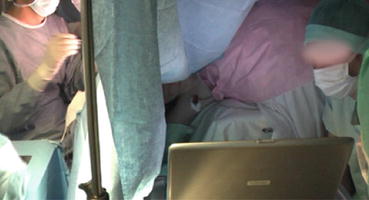

Fig. 18.3
Positioning in the operating theater, showing the relative positions of the patient, the neurosurgeon, the speech therapist/neuropsychologist, and the computer screen
Table 18.2
Different kinds of disorders observed during DES, reflecting the level of processing concerned
Effect of DES (naming task DO 80) | Level of processing |
|---|---|
Speech arrest
Stay updated, free articles. Join our Telegram channel
Full access? Get Clinical Tree
 Get Clinical Tree app for offline access
Get Clinical Tree app for offline access

|

